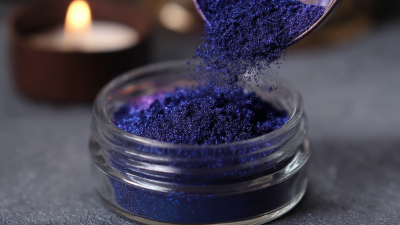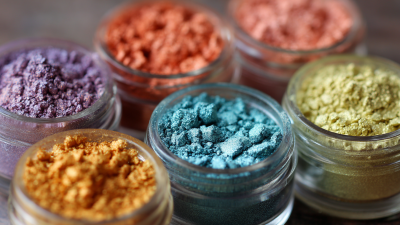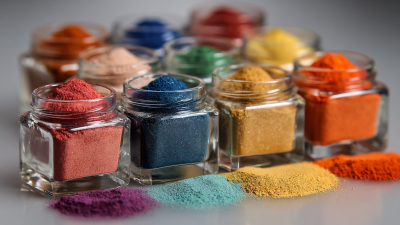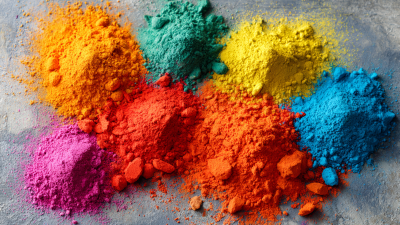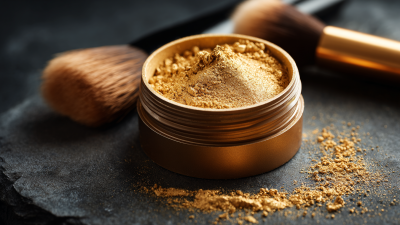In recent years, the demand for high-quality resin products has surged, driven by advancements in industries such as construction, automotive, and art. The global resin market is projected to reach approximately $40 billion by 2027, growing at a CAGR of 6.1% (ResearchAndMarkets, 2022). A key factor contributing to this growth is the integration of innovative solutions like Pigment Powder for Resin, which enhances both aesthetic appeal and functionality. Utilizing pigment powder not only broadens the color palette available to manufacturers but also improves the durability and UV resistance of the final products. According to a report by Transparency Market Research, the incorporation of high-performance pigments in resin formulations can enhance color stability and reduce fading, making them increasingly attractive for consumers. This tutorial will delve into effective methods and techniques for incorporating pigment powders into resin materials, empowering manufacturers to capitalize on these trends and elevate their product offerings.

In the resin industry, the incorporation of pigment powder is essential for creating visually appealing products. Recent studies indicate that the global market for pigment powders is projected to grow at a CAGR of 5.6% from 2023 to 2030, reflecting a growing demand for customized and vibrant resin applications.
Innovative techniques for mixing pigment powder into resin not only enhance aesthetic qualities but also improve performance metrics such as durability and UV resistance.
One effective method gaining traction is the use of high-shear mixing equipment, which ensures a homogeneous blend of resin and pigment. This technique minimizes settlement and enhances color stability, leading to more consistent product quality. Additionally, blending additives like dispersants can further improve the distribution of pigment particles within the resin matrix, allowing for richer coloration without compromising clarity.
With the right approach, manufacturers can not only meet customer expectations but also push the boundaries of creativity in resin applications, opening new avenues for product innovation.
The use of pigment powder in resin products not only enhances aesthetic appeal but also improves functional properties. By integrating colorants into resin formulations, manufacturers can achieve vibrant hues and a range of textures that cater to diverse applications, from artistic endeavors to industrial solutions. Pigment powders can contribute to UV resistance and durability, making the final products suitable for outdoor use without compromising on visual integrity.
Moreover, the benefits of combining resin with pigment powder extend beyond aesthetics. For instance, 3D printing resins utilized in additive manufacturing benefit from the addition of certain pigment powders, which can enhance thermal stability and control the viscosity of the material. This is especially important for achieving precise prints while optimizing performance. As industries continue to innovate, the use of pigment powders represents a significant advancement in the development of high-quality resin products, unlocking new potential for creativity and functionality.
| Feature | Description | Benefits | Applications |
|---|---|---|---|
| Color Variety | Various colors and shades available | Enhances aesthetic appeal and customization | Artistic resin crafts, home decor |
| UV Resistance | Paints resistant to sun exposure | Prevents fading and discoloration | Outdoor furniture, art installations |
| Non-toxicity | Low VOC pigment options | Safeguards health and environment | Children's toys, food-safe products |
| Durability | Long-lasting pigments that resist wear | Increases product lifespan | Automotive parts, industrial applications |
| Ease of Mixing | Compatibility with various resin formulations | Streamlines production processes | Manufacturing of custom resin products |
Exploring different types of pigment powders for resin applications reveals a vibrant world of possibilities. The use of pigment powders can significantly enhance resin products, providing not only aesthetic appeal but also unique functional properties. Organic pigments, known for their bright hues and versatility, work well in crafting eye-catching ornaments and art pieces. Conversely, inorganic pigments tend to offer superior lightfastness and stability, making them ideal for outdoor applications where durability is paramount.
When integrating pigment powders into your resin projects, consider these tips: First, start with high-quality pigments to ensure color integrity and stability over time. Second, experiment with blending different types of pigments to achieve custom colors and effects. Lastly, be mindful of the mixing process; proper dispersion of the pigment in the resin will result in a more uniform color throughout the final product. By leveraging these insights, you can elevate your resin applications, creating stunning and long-lasting outcomes.
Achieving consistent color with resin products infused with pigment powder is a prominent challenge faced by manufacturers in the industry. According to a report by Smithers Pira, over 40% of manufacturers cited color consistency as one of the top three quality issues they encounter, leading to increased production costs and customer dissatisfaction. This inconsistency can stem from a variety of factors, including variations in pigment properties, concentration, as well as environmental conditions during the curing process.
To tackle these challenges, innovative solutions such as advanced blending techniques and the use of color management systems have emerged. Implementing a closed-loop color control system can help maintain uniformity across production batches by using real-time data to adjust pigment levels dynamically.
Furthermore, the integration of high-quality, stabilized pigment powders can reduce the variability experienced during the pigment mixing process. Recent advancements indicate that using polymer-based pigment dispersions can enhance the overall performance of resin products, improving both color stability and opacity. A study published in the Journal of Coatings Technology emphasizes that with these approaches, manufacturers can achieve color consistency improvements of up to 25%, thereby enhancing product quality and market competitiveness.
The future of pigment powder development holds exciting potential for enhancing resin products across various industries. With an increasing focus on sustainability and eco-friendly practices, innovations in hybrid pigments are paving the way for new coloration possibilities in resin formulations. These hybrid pigments, which combine organic and inorganic materials, not only offer unique aesthetic qualities but also improve the overall performance characteristics of resins. This integration leads to enhanced durability and environmental resilience, addressing the growing demand for sustainable materials.
Moreover, the market is witnessing a significant shift towards recycled materials, evidenced by the formulation of polyester resins from recycled polyethylene terephthalate (PET). This approach not only reduces waste but also enhances product properties by incorporating metallic fillers, aligning with the broader sustainability goals of industries. As consumer awareness increases, the demand for resin products that utilize advanced pigment technologies and recycled materials will likely shape future trends, driving innovation in formulation processes and application methods. The exploration of these advancements promises to deliver superior performance and aesthetic options, transforming the way products are designed and manufactured in the resin market.
